Sunday 13th August
I had a couple over from Kent for a field trip in the New Forest who wished to see the Golden-ringed. When leading I usually take a back seat , going in for a shot once my charges have had their fill. An obliging male Golden-ringed allowed me to experiment with using a wide angle lens; something I’ve always wanted to try.
The only wide angle lens I have is the kit lens bundled with my D60 purchase back in 2008. I wanted to capture more of the surroundings, however it’s quite obvious I need to rethink my settings as I ended up with a more or less isolated shot.
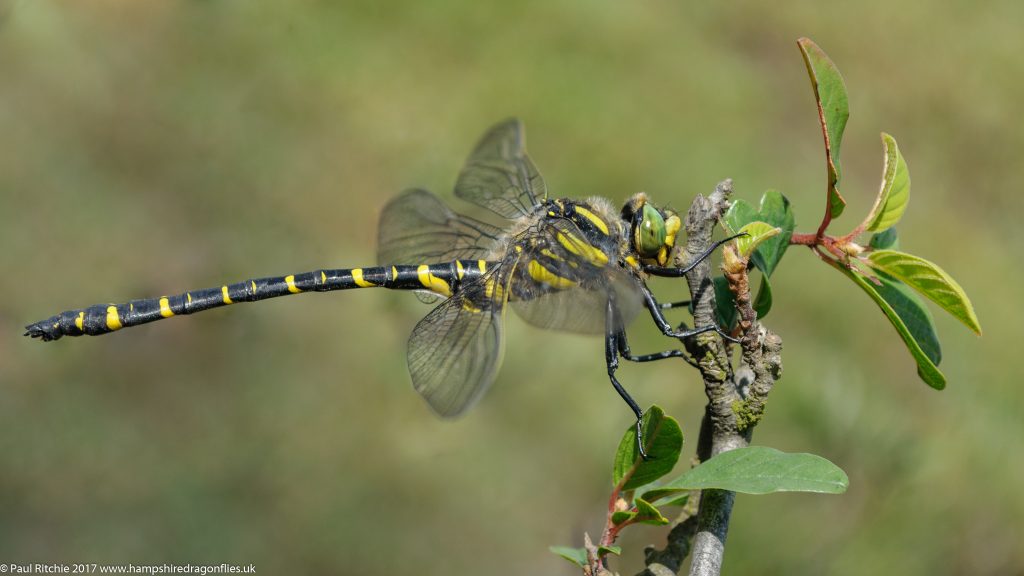
Tuesday 15th August
Tuesday offered the right conditions for a session with filmmaker Aaron Cook, featuring the lowland heath at the western fringes of the New Forest. Deciding the open heath was the best place to start, Aaron was immediately impressed by the dynamic colours provided by the heather & ling surrounding shallow peaty ponds.
A willing male Black Darter was the ideal first subject to start with.
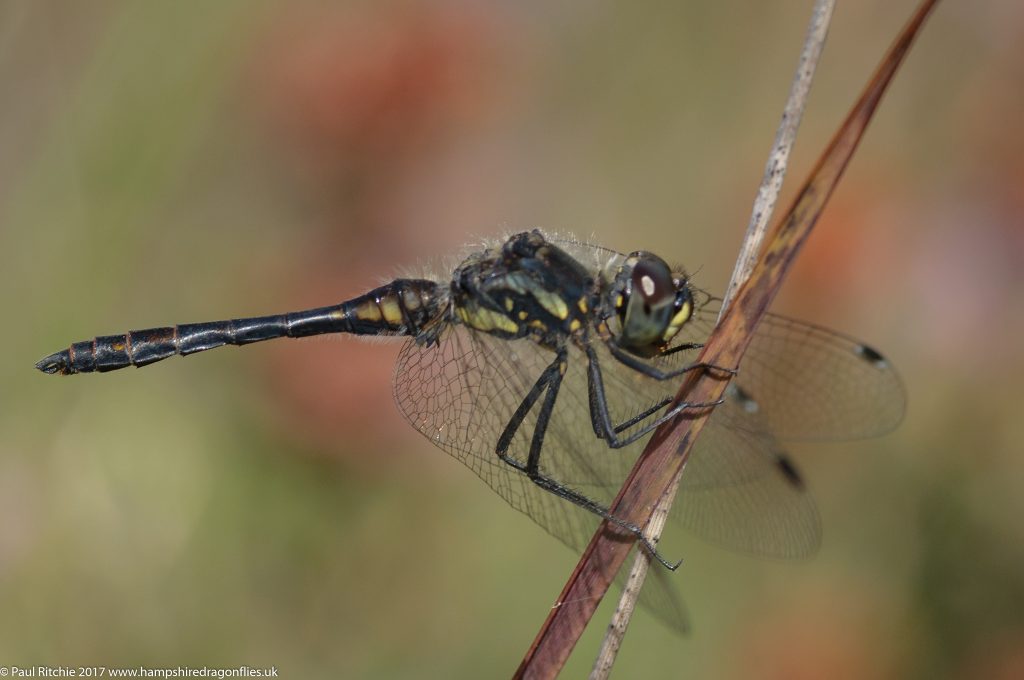
As usual the first day after a period of rain activity around the ponds is muted, and I can’t help worrying the inclement weather has played it’s part diminishing the populations. If they can’t eat, they can’t survive.
Those that do see it through spend the first sunny day wisely building up their energy reserves, and across the road in a sunny clearing the hawkers were having a feeding frenzy. A couple of Brown, a male Southern and countless Migrants were scouring the treeline or bouncing along the heather and gorse.
Most of the Migrant are immature males and females and are a little nervous to approach, however there are a few who appear to switch off, allowing a close approach with the macro.
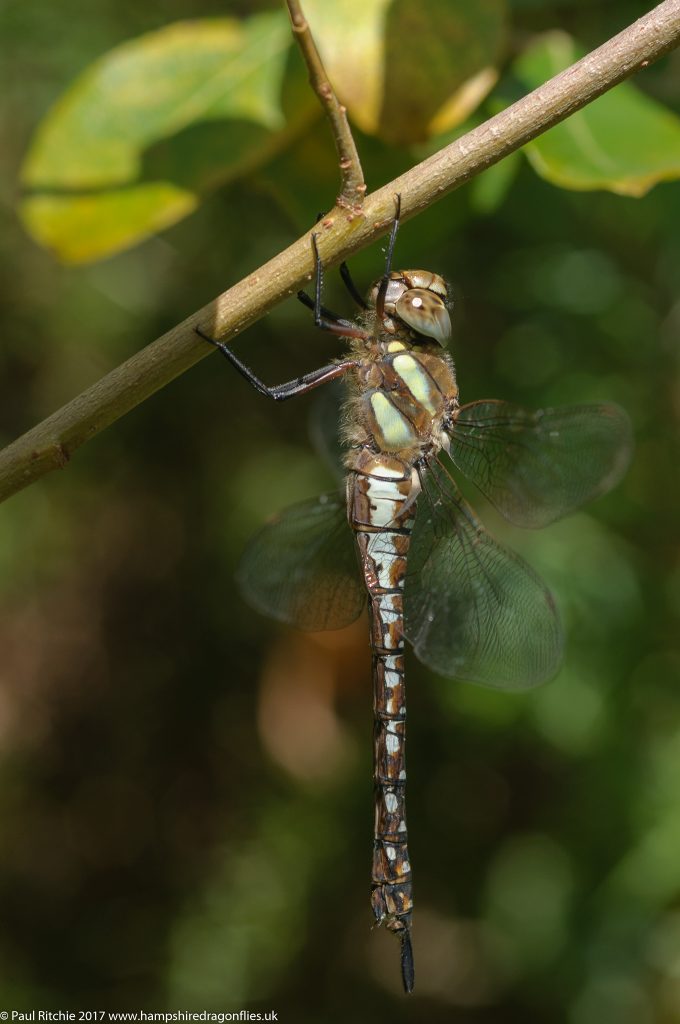
Wednesday 16th August
On my first free day for a long while I headed over to Bentley Wood and was immediately aware of the lack of damsels, just a lone Common Blue resting up on the bank. The Ruddy Darters however were in impressive numbers; possibly the best I’ve seen here, all playfully elusive or frustratingly choosing to perch against aesthetics.
Another fabulous sight were the 50+ Brimstone, both male and female, and a few Large White feeding on the Fleabane and Thistle.
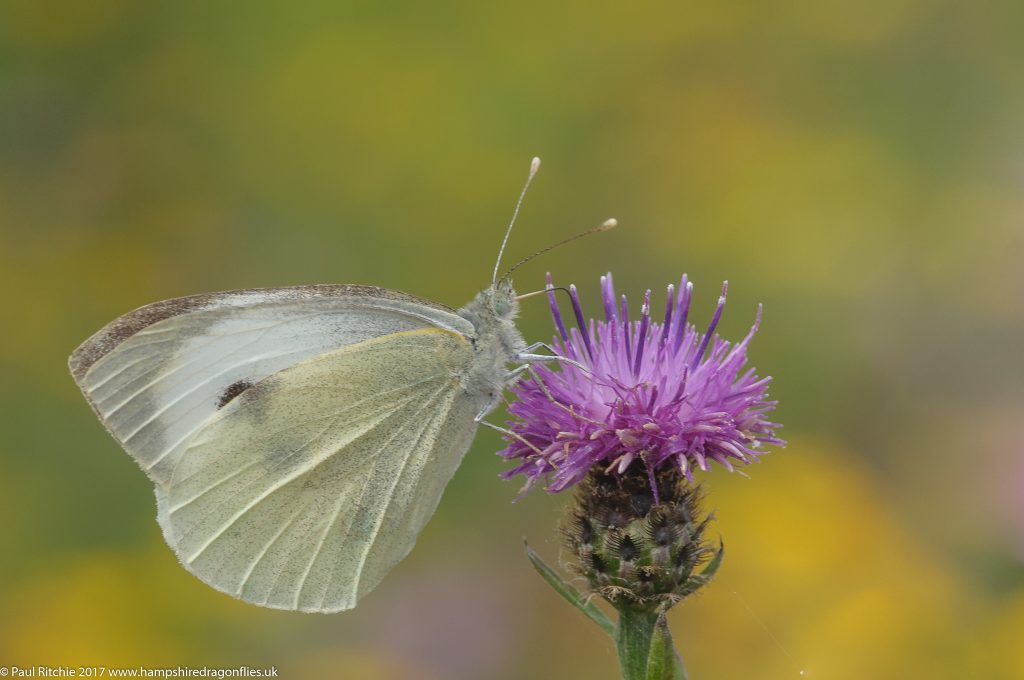
Over water activity was very disappointing, with just a male Emperor patrolling the far shore. I must have waited two hours before I had a Southern Hawker pop in briefly for 30 seconds.
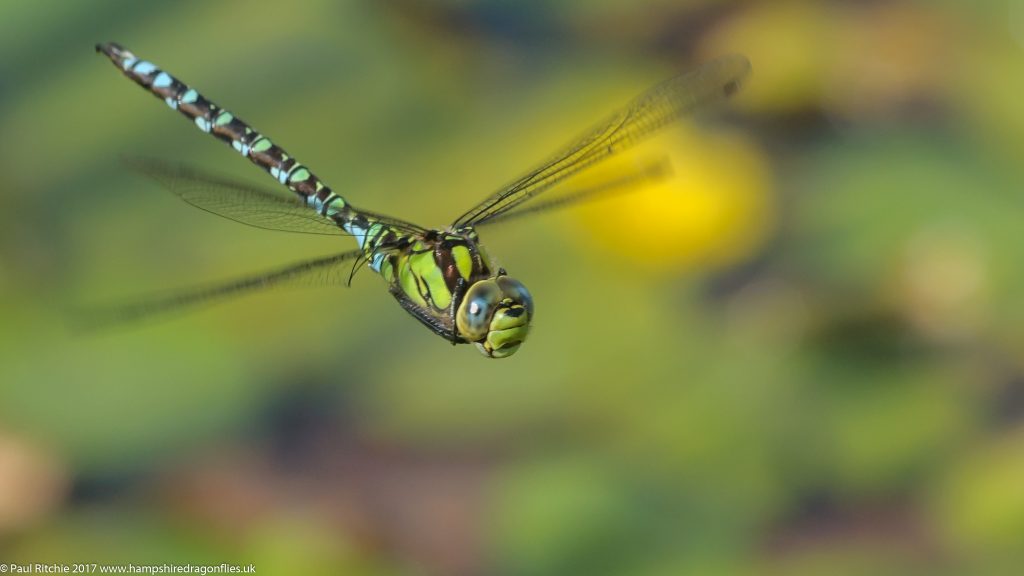
A male Southern being perfectly cryptic against the carpet of Water Lily makes for a challenging subject, and I was grateful for the opportunity, albeit very brief.
Not a lot else dragonfly-wise going on except for half-a-dozen Migrant feeding along the edge of the wood. A shot or two to come home with though.
